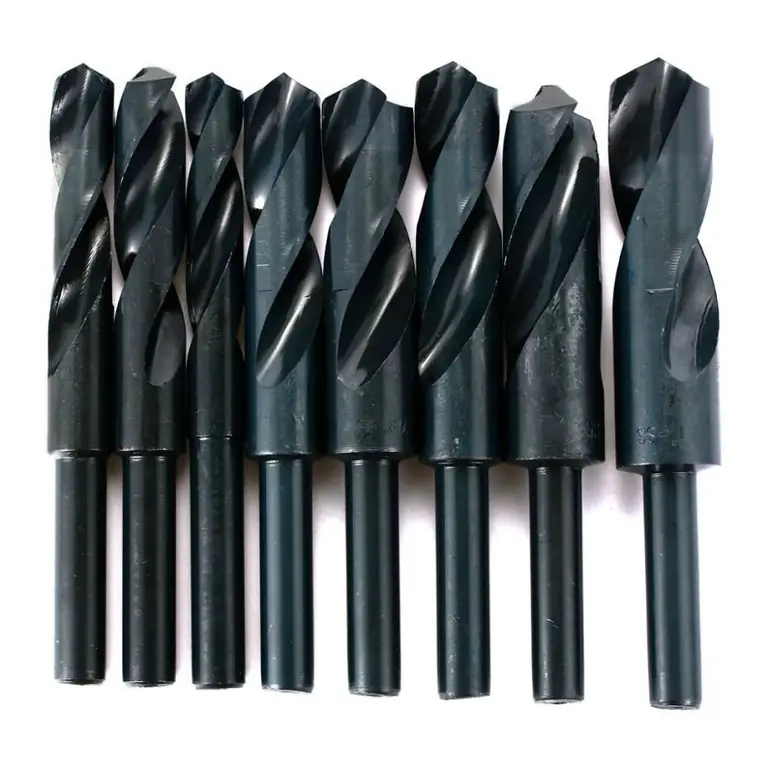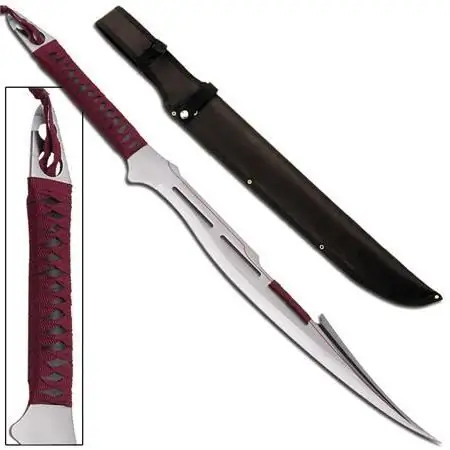2026 Author: Howard Calhoun | [email protected]. Last modified: 2025-01-24 13:10:45
This article is a brief description of all the features of steel 20X13: characteristics, application, properties, substitutes and foreign analogues. This article will be useful to those who want to get acquainted with the most important information on this topic in a short time without wasting time.
Deciphering steel

So, let's start with the simplest. Correctly deciphering steel grades is a very useful skill, which is indispensable if you often work with various alloys.
Since the Soviet naming system and GOSTs are still used in the domestic metallurgy, absolutely any steel grade is deciphered according to approximately the same principle. Steel 20X13 is deciphered very simply:
- The number 20 (or 2 in some cases) indicates the amount of the main alloying element in any steel - carbon.
- The letter X means that the alloy contains at least chromium.
- The number 13 indicates the percentage of the previous chemical element.
After such a surface analysis, based only on reading the steel grade, it becomes clear that we have technical steel with a carbon content (approximately 0.2%) and chromium (approximately 13%). It is important to note that this information already sufficiently fully allows us to determine the characteristics and application of steel 20X13.
Steel composition

Now consider the most important component of any metal-containing alloy - its composition.
Thanks to official technical documents, anyone can determine with a high degree of accuracy which elements are included in the composition of steel 20X13. Their list is as follows:
- Carbon - 0.2% - an element without which steel cannot exist. It is he who gives the soft iron strength and hardness. However, at this grade, the alloy is still relatively ductile and machinable, in some cases even without preheating.
- Silicon - 0.6% - an alloying additive that improves the structure of steel and allows it to better tolerate overheating.
- Manganese - 0.6% - an additive in many respects similar to the previous one, however, manganese not only increases the hardenability of steel, but also increases its toughness.
- Nickel - 0.6% - again an alloying element that increases the thermal stability of steel, its overall ductility and strength.
- Chromium - 13% - no less important element than the same carbon, because chromium is responsible for the strength of steel, its corrosion resistance, hardenability andconductance.
At this stage, we can add that 20X13 is a heat-resistant steel with exceptional resistance to elevated temperatures, if, of course, it is compared with other technical steels. In addition, the alloy is extremely resistant to corrosion and oxidation due to its high chromium content.
If you know the characteristics of steel 20X13, the use of this alloy ceases to be a secret. With a high degree of probability, these may be parts operating at high temperatures.
Steel production

However, in its original form, steel is not very suitable for use, so the metallurgical plants not only smelt the alloy, but also give it a certain shape. In this way, several goals can be achieved at once:
- Shaped steel is easier to store.
- It is much easier to transport.
- Customers know in advance which form factor of the product they buy is more preferable.
For steel 20X13, GOSTs provide for several molding options:
- Bars of various gauges.
- Steel strip.
- Steel tape.
- Steel sheet of various thicknesses.
- Forging.
- Pipes of various diameters.
- Steel wire.
Use of steel 20X13

This alloy is used primarily for the manufacture of quite ordinary bolts and nuts of various diameters and configurations. In this field of steel 20X13, it actively helpscorrosion resistance. The second area is energy. Industrial engine rotors, turbine blades and other important components are made from 20X13 alloy. The third area of application is the construction of furnaces. Since 20X13 is a heat-resistant steel, its use in this process is more than justified, since some other grades of steel will simply lose their original properties. But the heat resistance of this steel is not really revealed here. The third, but no less significant area of application of the characteristics of steel 20X13 is the processing of petroleum products at high temperatures, where the heat resistance of steel was especially useful.
Substitutes

In such a highly demanded field as metallurgy, there can be no interchangeable products of production. For any grade of steel, there is a substitute that fully or partially corresponds to the original in terms of its characteristics and composition. For steel 20X13, there are such substitute grades:
- 12X13 - steel with a lower carbon content, which is somewhat offset by a high content of silicon and manganese.
- 14X17H2 - an alloy richer in various additives, characterized by a slightly higher carbon content, additional additives of titanium, copper and nickel. A similar grade of steel has better characteristics and, for example, the same steel sheet of this grade will be more preferable for the manufacture of something.
Foreign analogues
The need for heat-resistant metal-containing alloys is ubiquitous, soin various countries on different continents, their own production of steels is being established, often very similar in composition to their foreign counterparts. For steel 20X13 abroad there are the following analogues:
- United States of America - 420 and S42000;
- Japan - SUS420J1;
- Europe - Х20Cr13;
- China - 2Cr13.
Knowing these names, anyone will be able, regardless of their geographical location, to purchase a product made from the desired steel grade in the nearest store.
Recommended:
CVG steel: composition, application and characteristics

Studying metallurgy and all its subtleties, you involuntarily begin to experience an irresistible desire to get as much useful information as possible and spend as little time and effort as possible on it. In such a case, this article exists. It contains all the most important information related to CVG steel: deciphering the marking, studying the composition, the use of this alloy, as well as a brief excursion into substitute steels and foreign analogues. Everything you need in one place for everyone's convenience
Food stainless steel: GOST. How to identify food grade stainless steel? What is the difference between food stainless steel and technical stainless steel?

The article talks about grades of food grade stainless steel. Read how to distinguish food stainless steel from technical
Steel R18: GOST, characteristics, forging and analogues

Every person, even the most distant from the industry, at least out of the corner of his ear heard about the outstanding properties of P18 high speed steel. It is rumored to be a super-hard alloy capable of cutting, drilling, or otherwise working any other grade of steel. In addition to strength characteristics, high-speed 18th steel is highly valued by blacksmiths, manufacturers of household knives and edged weapons. Did P18 steel deserve such an attitude or not? You will learn about this from the article
Steel 40ХН: characteristics, GOST and analogues

Unfortunately, exploring the vast Internet in search of simple and understandable articles on the topic of metal structures and steels in principle, at best, you will find a couple of completely unstructured articles that do not make so much sense. In other cases, information is provided in the form of simple clippings from regulatory documents, where all information will be given in the form of obscure scientific and technical abbreviations and designations
440 steel - stainless steel. Steel 440: characteristics

Many people know 440 steel. It has established itself as a reliable, anti-corrosion, time-tested hard material, which is most often used for the manufacture of knives for various purposes. What is the secret of this alloy? What are its chemical, physical characteristics and applications?

